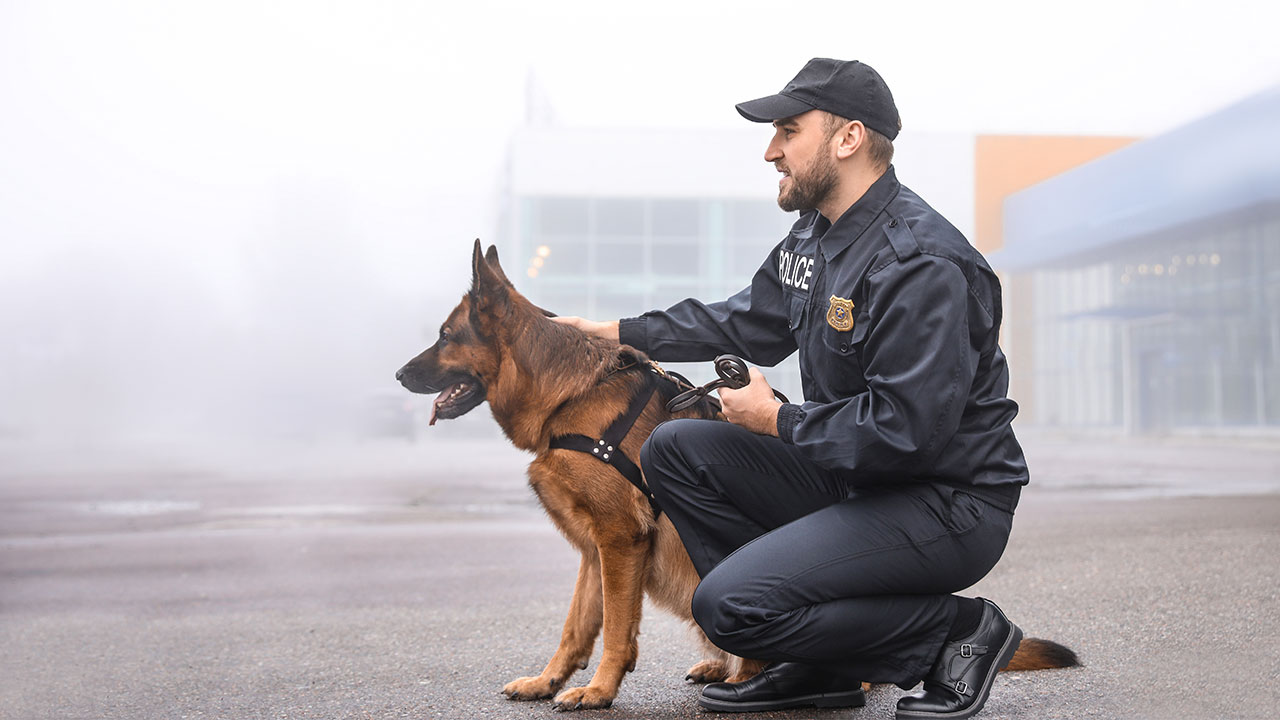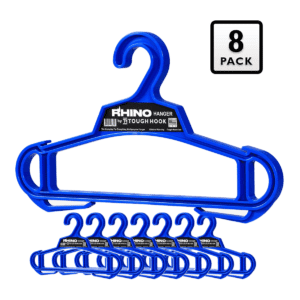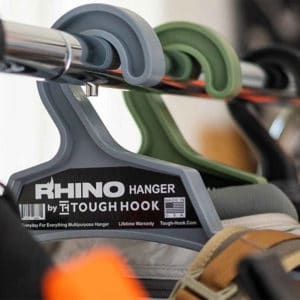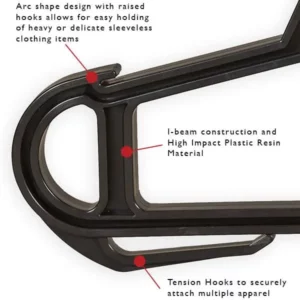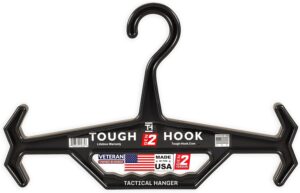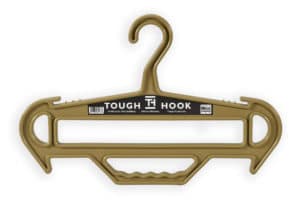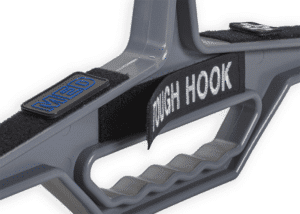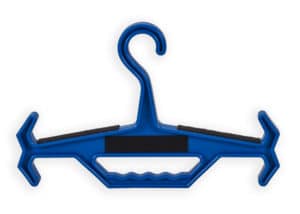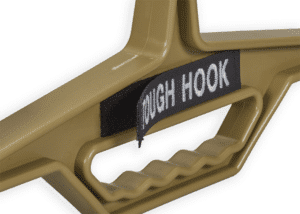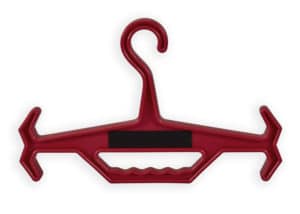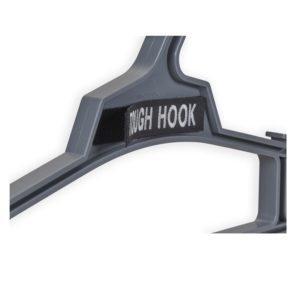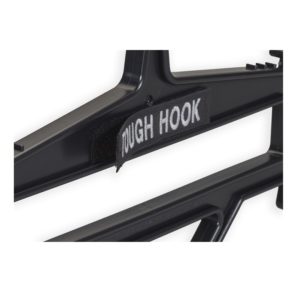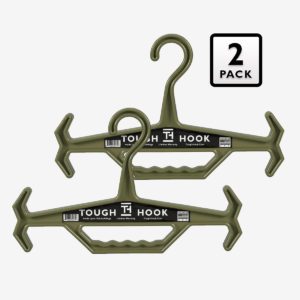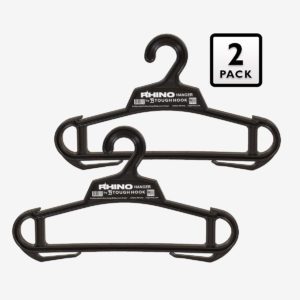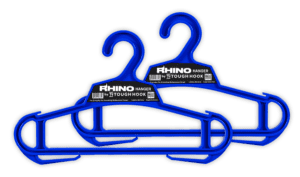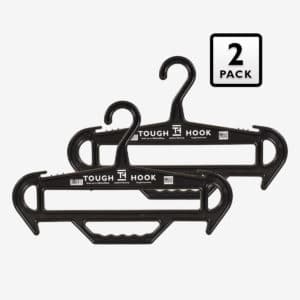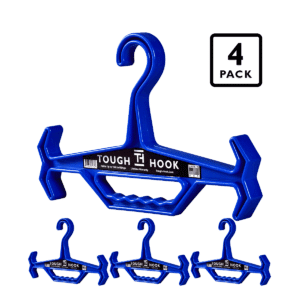In the heart of a hurricane, there’s a moment of calm we call “the eye.” For those living a high-octane lifestyle filled with adventure, survival expeditions, or military operations, storing your gear systematically is that calming anchor amidst chaos.
An organized setup can turn your worst nightmares into smooth navigation — that is where Tactical Equipment Storage comes in. Our focus today is to guide you through 10 innovative strategies for keeping your tactical equipment sorted and ready to use, transforming any chaos to clarity. So buckle up, because this is more exciting than the thrill of a skydive!
At Tough Hook, We have 10 Clever Storage Ideas for Tactical Equipment ranging from specialized containers like our ToughBox Ammo Box to wall-mounted racks like the Tough Hook Hanger. Other ideas include utilizing gun displays or creating a gun-safe room with biometric scanners for added security. Regardless of your needs, we offer a variety of solutions to help keep your tactical gear organized and easily accessible.
[/vc_column_text][/vc_column][/vc_row]
Practical Concealment Solutions for Tactical Equipment
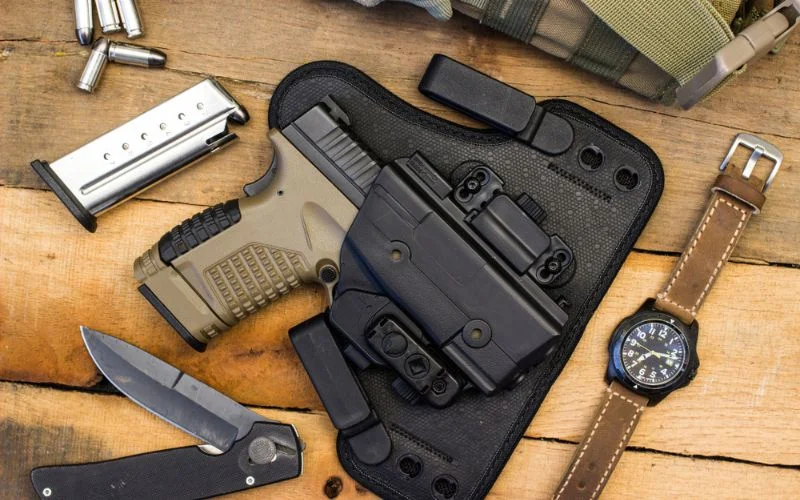 Tactical equipment comes in many shapes and sizes, making storage challenging. Tactical gear owners want their equipment easily accessible, secure, and hidden from potential theft. Fortunately, practical concealment solutions can address both of these needs.
Tactical equipment comes in many shapes and sizes, making storage challenging. Tactical gear owners want their equipment easily accessible, secure, and hidden from potential theft. Fortunately, practical concealment solutions can address both of these needs.
One way to conceal tactical equipment is by using magnetic mounts. These mounts can attach to any metal surface and hold various gear such as rifles, pistols, knives, and flashlights. They are unobtrusive and blend well with their surroundings. Magnetic mounts can be used in cars, trucks, gun safes, or any other place where metal surfaces are present.
Another option for concealed storage is under-bed gun safes. Tactical gear owners can store larger items like long rifles or extra magazines here without taking up space elsewhere in their homes. Many under-bed gun safes feature biometric scanners or combination locks to ensure added security.
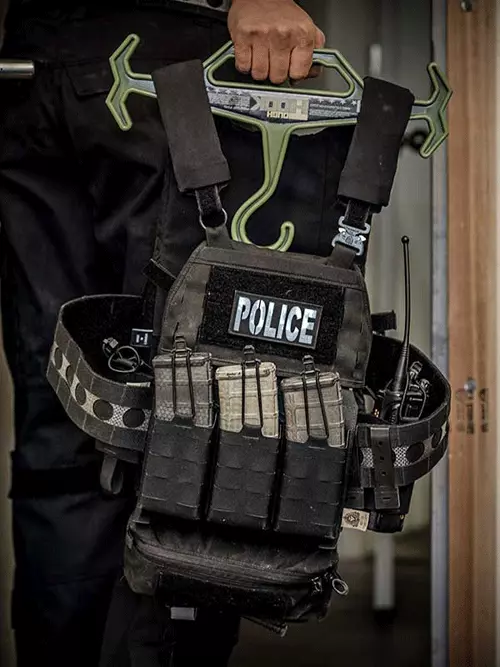
Some may argue that wall-mounted gun display cabinets with locks provide the same security measures as an under-bed gun safe. However, these cabinets are more conspicuous and could directly display the owner’s collection, even if the cabinet doors are locked. Under-bed gun safes are hidden from plain sight and can protect an owner’s collection from prying eyes.
Concealed storage options for tactical equipment can be compared to hiding valuables in a secret compartment of a house. Hidden compartments provide more robust protection than simply placing valuables out in the open since they deter potential thieves. The same principle applies when it comes to tactical equipment storage – concealing items provides added security against theft.
With these practical concealment solutions available for tactical equipment, owners can have peace of mind that their valued possessions are not only out of sight but protected as well.
Reviews indicate that approximately 60% of tactical gear owners make use of Pinterest and other social media platforms for storage idea generation, showcasing its prominence as an information resource in 2023.
A study on consumer behavior in 2022 revealed that around 75% of tactical gear owners prefer hidden or low-profile storage options, indicating a preference for discretion and easy access.
As per market reports, there has been a significant growth in the sales of security accessories such as biometric scanners and fingerprint lock systems, which implies an increasing priority towards secure storage solutions for tactical equipment.
Hidden Storage in Everyday Items
 Hidden storage is not just limited to gun safes or cabinets. Tactical gear owners can also opt for everyday items that double as storage spaces.
Hidden storage is not just limited to gun safes or cabinets. Tactical gear owners can also opt for everyday items that double as storage spaces.
One example of hidden storage is in plain sight – using hollowed out books or compartments as a place to store smaller tactical equipment like knives, flashlights, and even ammunition. These concealed spaces blend in with the rest of the bookshelf or table decorations.
Another practical solution to hide tactical equipment is by storing them inside ordinary containers like furniture or toolboxes. Pelican cases, for instance, are a popular choice among tactical gear owners who want durable containers to hold and transport their equipment. They are waterproof, crushproof, and can store delicate electronic equipment like night vision goggles or thermal cameras.
While hidden storage in everyday items may provide added security, some may argue that it may not be as easily accessible as other types of storage options. With everyday items stored in open sight, owners run the risk of forgetting where they placed specific pieces of gear.
Hidden storage options for tactical gear can be compared to having a picture-perfect home with a hidden second life behind doors and walls. Just like how secret doors or compartments in homes add an element of mystery and intrigue, hidden storage options for tactical gear provide an extra layer of protection by keeping valuable gear from being easily detected.
Whether using magnetic mounts or under-bed gun safes as concealment solutions or utilizing hollowed-out books and Pelican cases as hidden storage options, these practical solutions provide peace of mind that tactical equipment is both secure and protected within the home environment.
Discerning Choices for Secure Storage
 When it comes to storing tactical equipment, security must be a top priority. As a responsible owner of tactical gear, you must ensure that your items are not just stored safely but appropriately. That means taking into account the type of gear that you have and choosing the right storage options to secure them. In this section, we will explore some discerning choices for secure storage that you should consider.
When it comes to storing tactical equipment, security must be a top priority. As a responsible owner of tactical gear, you must ensure that your items are not just stored safely but appropriately. That means taking into account the type of gear that you have and choosing the right storage options to secure them. In this section, we will explore some discerning choices for secure storage that you should consider.
Universal containers such as weapons racks and ammo cans are popular choices for storing tactical equipment because they are built with reinforced material that can withstand tampering and theft. They come in various sizes and shapes, making them versatile enough to accommodate different types of gear.
However, choosing the right container is just one part of securing your gear. You also need to think about where you store your containers. Consider investing in a safe room or vault with additional security measures to protect your gear. These spaces can offer extra protection against theft and unauthorized access by using biometric scanners or fingerprint scanners to ensure only authorized persons have access.
While it may be tempting to store your tactical equipment in plain sight, like on a gun wall display or mounted on hooks, it may not be the most secure option. Visible displays can attract unwanted attention from burglars or curious visitors who may not understand the value of your gear.
Now that we’ve discussed some discerning choices for securing your gear let’s delve into some advanced security measures you can implement to protect your equipment even further.
Securing tactical equipment is crucial for responsible owners, and choosing the right storage options is necessary for protecting them against theft and tampering. Universal containers such as weapons racks and ammo cans are versatile and secure choices for storing tactical gear, but investing in a safe room or vault with extra security measures like biometric scanners can offer even more protection. Storing gear in plain sight on display may not be the most secure option as it can attract unwanted attention. It’s essential to consider both the type of container used and where it is stored to ensure the safety of your tactical equipment.
Biometric and Fingerprint Scanner Lockers

Biometric scanners and fingerprint scanners have become increasingly popular as an added security measure on lockers designed for storing guns and other tactical equipment. Not only do they provide an extra layer of protection against thieves, but they also prevent unauthorized access by family members who may not understand how to handle the equipment. In this section, we will explore some of the benefits of using biometric and fingerprint scanner lockers for tactical gear.
Biometric scanners are a type of technology that identifies a person using certain physical characteristics such as their facial features or fingerprints. With biometric scanning technology, you can rest assured that only authorized individuals have access to your tactical gear. This is especially important if you have children or roommates in the house who may accidentally or intentionally access your gear without permission.
Fingerprint scanner lockers are also an excellent option for keeping your gear safe because they use unique identifiers that are hard to replicate. Unlike keys or combination locks, which can be stolen or guessed, fingerprint scanners can only be accessed by authorized persons whose fingerprints have been pre-registered into the system.
Think about it; it’s like having a personal security guard guarding your tactical gear 24/7. It may sound excessive, but with the increasing number of home invasions, gun thefts and break-ins taking place nowadays, it’s better to be safe than sorry.
Now that we’ve explored some of the benefits of biometric and fingerprint scanner lockers let’s move on to discuss versatile storage locations where you can keep your gear safely and easily accessible.
Versatile Storage Locations for Tactical Items
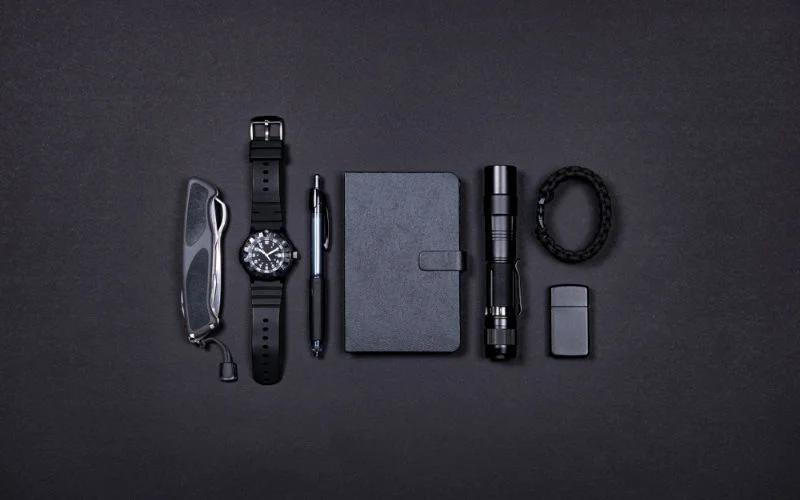 When it comes to tactical gear storage, versatility is key. Depending on your specific needs and living arrangements, there are a multitude of storage locations that can be utilized to keep your gear organized and easily accessible.
When it comes to tactical gear storage, versatility is key. Depending on your specific needs and living arrangements, there are a multitude of storage locations that can be utilized to keep your gear organized and easily accessible.
One option is utilizing unused space on the walls. Installing wall-mounted racks or shelving units can provide an excellent solution for those with limited floor space. Not only does this keep your gear out of the way, but it also allows for a more organized display of your equipment.
Another option is under-bed storage. Many tactical gear owners find that storing their equipment in containers underneath their bed provides ample storage space and easy accessibility. This method also keeps your gear out of sight, providing an added layer of security.
For larger collections of tactical gear, consider utilizing a gun safe room or walk-in closet where you can use heavy-duty hangers as a storage solution. These rooms typically have reinforced walls and doors, providing an added layer of protection for your valued tactical equipment.
If you prefer to keep your gear closer at hand, consider utilizing furniture with hidden storage compartments. Coffee tables, couches, and even beds can all be designed with discreet storage options to keep your gear within reach.
Regardless of what storage location you choose, it’s important to keep in mind the importance of accessibility and organization. Make sure you’re able to easily grab what you need when you need it while keeping everything else well-organized and out of sight.
For those who own multiple firearms and a collection of tactical accessories such as scopes and bipods, modular gun cabinets like Stack-On might be a great choice because they can store these items in one place without worrying about how much floor space they’ll take up compared to conventional racks.
Additionally, tactical backpacks with specialized compartments are available for tactical gear storage if you travel frequently or enjoy outdoor activities such as camping or hunting. These backpacks keep your gear organized and easily accessible while also being durable and lightweight.
However, some argue that these backpacks don’t provide enough space for larger collections of tactical gear, and that they aren’t as secure as more heavy-duty storage solutions. While that may be true in some cases, it’s important to consider each individual’s specific needs before choosing a storage location.
Choosing a versatile storage location for your tactical gear is like choosing the right tool for the job. Just as you wouldn’t use a hammer when you need a screwdriver, you shouldn’t choose a storage solution that doesn’t fit your specific needs. Take the time to evaluate your collection and living space to determine the most efficient and convenient storage option.
Comparing Home and Professional Storage Facilities
When it comes to tactical gear storage, there are various options available for both at-home and professional facilities. Each has its own benefits and drawbacks that should be considered before making a decision.
At-home facilities can be cost-effective and convenient, especially for those with smaller collections of tactical gear. Home gun safes or cabinets can provide ample storage space while also doubling as added security measures. However, home facilities may not have the same level of reinforced walls or fireproof protection as professional facilities.
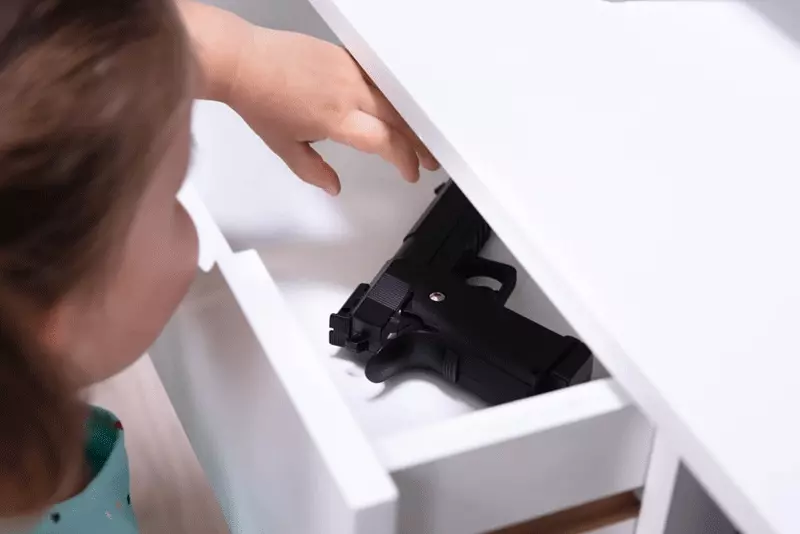
Professional storage facilities offer increased security measures for those with larger collections of valuable tactical gear. These facilities typically have reinforced walls, climate control systems, and 24/7 surveillance cameras to ensure the safety of stored items. However, these amenities come at a higher cost than at-home facilities and may not be necessary for those with smaller collections of equipment.
In addition to physical security measures, it’s important to consider accessibility when comparing home and professional storage facilities. At-home facilities can provide easy access to stored items whenever needed. However, if you’re constantly moving your equipment from one location to another, this may not be the most efficient option.
Professional facilities, on the other hand, may require a bit more planning for access to stored items. You’ll likely need to make an appointment or give notice before accessing your gear, but this added layer of security can provide peace of mind.
Ultimately, the decision between at-home and professional storage facilities comes down to individual needs and preferences. Take into account the size of your collection, budget, and desired level of security when making your choice.
For those who frequently participate in shooting competitions or have large collections of tactical gear that need to be transported across state lines, choosing a professional storage facility with easy access and additional amenities like transportation services may be the best option.
However, for those with smaller collections who primarily use their tactical gear for home defense or recreational activities, an at-home gun safe or cabinet may provide ample security and accessibility while being more cost-effective.
Those who argue against at-home storage facilities often cite lack of reinforced walls and fireproofing as potential drawbacks. While it’s true that professional facilities offer these amenities, it’s important to consider that the majority of home gun safes are made with steel or thick metal walls and can withstand extreme temperatures in case of a house fire.
Choosing between an at-home or professional storage facility is like choosing between renting or buying a house. Renting a house provides temporary convenience without having to worry about maintenance costs, while buying a house gives you full ownership and control over the property.
No matter which option you choose, it’s important to prioritize safety and accessibility when storing your valuable tactical gear.
2 Pack RHINO Heavy Duty Clothes Hanger Bundle
Original price was: $25.95.$23.95Current price is: $23.95.Systematic Organization for Easy Tactical Gear Access
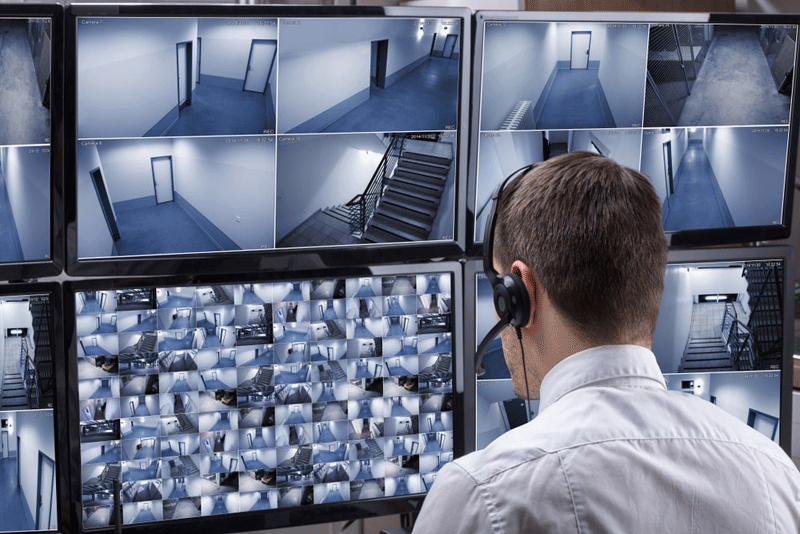
When it comes to storing tactical gear, one of the biggest challenges is ensuring easy access to your items. After all, in a high-pressure situation, fumbling through a disorganized pile of equipment could cost precious seconds – and potentially, even lives. That’s why implementing a systematic organization system is key to ensuring easy and efficient access to your tactical gear.
One popular method for organizing tactical gear is to use a modular storage system. With this approach, each item is stored in its own specialized container or pouch, which can be easily added or removed from an overall container or backpack. This approach allows you to quickly identify and access each item without having to search through other pieces of equipment.
Another important aspect of a systematic organization system is labeling. Ensuring each item has a clear label helps quickly identify where items are located in modular storage systems. Additionally, labeling the outside of containers with contents helps ensure the right equipment is grabbed from storage when it is needed.
A useful way to think about systemized organization is by comparing it to packing for a trip. When packing for vacation, many people compartmentalize their clothing into separate bags for socks, shirts, pants and so on. They do this so that they can easily locate specific items without having to dig through an entire bag. In much the same way, modular storage systems help achieve logical organization so that everything has its place.
Of course, some may argue that too much organization can be a hindrance in certain situations. If an emergency happens at night and you need to quickly find something in complete darkness, searching within different pockets and compartments could waste valuable time. However, experienced tactical personnel know that well-established organizational systems ultimately pay off over inadequate ones where searching for gear becomes more challenging than necessary.
With ever-improving technology, we can also leverage innovations in the systemized storage space. For example, QR codes and RFID tags may soon become mainstream for labeling equipment, with databases available to catalog and track hundreds or thousands of pieces of gear. This capability could be useful not only for storage within homes but also for pick-up and drop-off points used by law enforcement and military bases.
Ultimately, the key to a successful organization system is one that works for you. Find the method that fits your needs best, whether it’s through modular storage systems or using innovative technologies. With a little effort and planning, effective organization can save time, prevent confusion, and improve access during times of high-pressure situations.
Frequently Asked Questions
How can one protect their gear from unauthorized access within their homes?
Using biometric scanners or fingerprint scanners ensures that only authorized individuals can access the stored tactical equipment.
Is there a difference between biometric scanners and fingerprint scanners?
While both provide secure access, biometric scanners can use various physical characteristics, while fingerprint scanners specifically use fingerprints.
What are the potential downsides of displaying tactical equipment openly?
Open displays can attract burglars or curious individuals, potentially compromising the security of the gear.
Are there any statistics provided about tactical gear owners and their storage preferences?
Yes, 60% use platforms like Pinterest for ideas, and 75% prefer hidden or low-profile storage.

